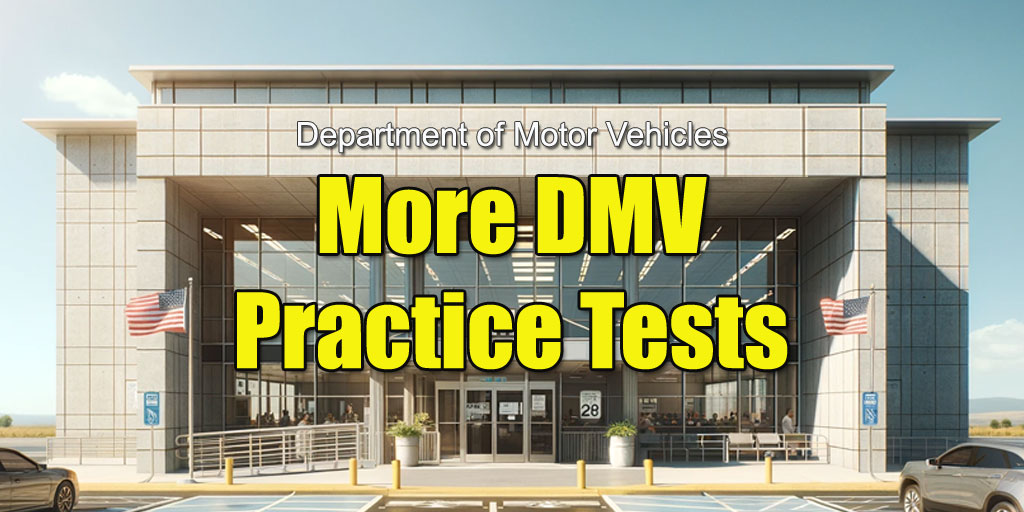The Traffic Signals Quiz – Random Questions
Mastering the Meanings of Traffic Signals
You may be preparing for your first DMV test to get your learner’s permit or driver’s license. Or you may be visiting the United States and need clarification on the different rules about traffic signals.
Mastering the meanings of traffic signals is an essential skill for all drivers in the United States. It’s not just about following rules; it’s about protecting yourself, your passengers, and others sharing the road.
The Basics of Traffic Signals: Red, Green, and Yellow
You will see the familiar trio of red, green, and yellow lights at most intersections. These colors are universal indicators, dictating when to stop, proceed with caution, or go. Understanding their meanings is fundamental to navigating the road safely.
- Red Light: This iconic signal commands drivers to stop completely. It’s non-negotiable, signaling the need to halt. Running a red light is illegal and incredibly dangerous, often leading to devastating accidents. Unlike many other countries, United States state laws allow you to turn right against a red light. Sometimes, you may also turn left against a solid red light. You must, however, always stop before you turn.
- Green Light: The green light symbolizes permission to proceed. It’s the go-ahead signal, indicating that moving forward is safe. However, green doesn’t mean rush; drivers must still exercise caution, especially when making left turns.
- Yellow Light: Often interpreted as a signal to speed up, the yellow light means slow down and prepare to stop. It serves as a transition between green and red, warning drivers of an impending change. While trying to beat the red light is tempting, doing so can have serious consequences.
Flashing Lights
In addition to the standard red, green, and yellow lights, you may encounter flashing signals.
- Flashing Yellow Light: When drivers encounter a flashing yellow light, it means proceed with caution. Unlike a solid yellow light, which indicates an impending red light, the flashing yellow light advises drivers to slow down and be prepared to yield to other vehicles or pedestrians. Crossing traffic often faces a flashing red light.
- Flashing Red Light: A flashing red light carries the same meaning as a stop sign. Drivers must come to a complete stop, yield to other vehicles and pedestrians, and proceed only when the intersection is clear. You will typically see flashing red lights at intersections where traffic signals are temporarily out of order or during late-night hours when traffic is minimal.
Arrow Lights
- Green and Yellow Arrows: These arrows provide additional guidance to drivers when making turns. A green arrow indicates a protected turn for a specific direction, allowing drivers to turn without conflicting with oncoming traffic. Conversely, a yellow arrow warns drivers that the green arrow is about to end, signaling the need to complete the turn or prepare to stop.
- Flashing Yellow Arrow: A relatively recent addition to traffic signals, the flashing yellow arrow is used primarily for left turns at intersections with dedicated turn lanes. It indicates that left turns are permitted, but drivers must yield to oncoming traffic and pedestrians. The flashing yellow arrow provides flexibility, allowing drivers to turn left when it is safe, even while oncoming traffic has a green light.
- Red Arrow: These arrows don’t have the same meaning across the United States. Some states allow right turns against a red arrow, and some don’t. Learn the rules in your state.
Signals are Important
The significance of learning and obeying traffic signals cannot be overstated. The different arrows and combinations of lights can confuse foreign drivers and first-time test takers.
Obeying traffic signals isn’t just about personal safety—it’s also a legal obligation. Violating traffic laws can result in fines, points on your driving record, increased insurance premiums, and even license suspension.
This quick quiz will check your knowledge of traffic signals and lights in the United States.
Can you reach a 100% score?
Cover photo by Casey Horner on Unsplash


The answers are very different than what I expected them to be. For example, question #9 was “what to do when a traffic light is flashing red” and I answered “stop, yield right of way for pedestrians, and wait until the light turns green”. But it gave a different answer that said that “you’re allowed to make a right turn at a red light”.
No such question in this quiz.
Just a note, though. A green light never follows a flashing red. Flashing red has the same meaning as a stop sign. You must stop, yield, and then go when safe.
Thank you so much!